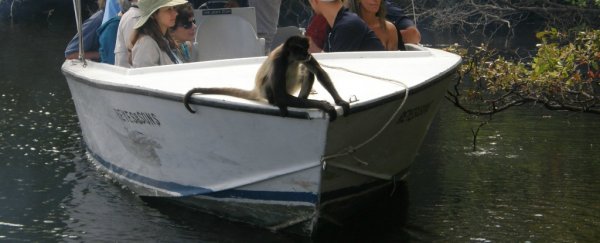While Columbus and other explorers get all the glory for their daring, ocean-crossing expeditions to the New World, they weren't the first to sail to North America. In fact, it's not even a contest, because researchers have found fossils that prove monkeys sailed to North America on rafts of vegetation some 21 million years ago.
Yup, just like our most famous explorers, monkeys took to the sea to start a new life on this continent, according to researchers from the University of Florida, who found seven fossilised monkey teeth in 21 million-year-old rock formations in the Panama Canal, which connects the Atlantic Ocean to the Pacific.
Before now, researchers thought monkeys made the trip from South America by walking across the Isthmus of Panama - a land strip that formed some 4 million years ago, after the two continents slammed into each other.
As Jason Daley reports for Smithsonian Magazine, this event was called the Great American Biotic Interchange, and it allowed for an exchange of species between the two continents that were previously cut off by a 100-mile gap of ocean water.
The latest findings - seven teeth from an ancient species called Panamacebus transitus - indicate that this watery gap wasn't enough to stop monkeys from dispersing to the north, so how did they do it?
In short, the team isn't sure. The most likely way is that they floated on rafts of vegetation that formed during tropical storms. A few monkeys probably jumped on these rafts, or were swept onto them, and landed in a new world 100 miles (160 km) away.
While this seems incredibly lucky, monkeys have somehow managed to disperse all over the world.
As Daley explains, monkeys originated in Africa and somehow got all the way to South America, where they flourished. This gap is insanely large, and researchers can only shrug their shoulders at how it might have happened, though many point to vegetation mats for this voyage, too.
Another strange question the researchers can't answer right now is why the monkeys stopped their progression north. If they can traverse the oceans and survive on a raft of debris, surely they can walk further up into North America.
So far, the only explanation for this is that monkeys are content in their tropical ecosystems and had no real need to move further north, though they could likely do so if they wanted to.
Hopefully, as more fossils like these are found, we will one day understand how monkeys managed to conquer the oceans millions upon millions of years ago.
The team's findings were published in Nature.
